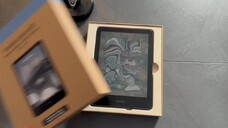Scientists have used supercomputer simulations to obtain the first 3D map of water molecules. The result, obtained by researchers at Italy’s National Research Council’s Institute for Chemical-Physical Processes (Icpf-Cnr) and the University of Messina in conjunction with Arizona State University and published in the Journal of Chemical Physics, represents an important step in understanding the properties of water, which profoundly influence the physical and chemical processes essential for living organisms.
While it is known that, at the molecular level, the behaviour of matter is governed by interactions between very intense local electric fields, until now it was unclear what effect such fields might have on water.
Researchers led by Valeria Conti Nibali from the University of Messina and Ipcf-Cnr carried out sophisticated simulations using a supercomputer and discovered that, under the influence of intense electric fields, water molecules line up in a direction running parallel to the electric field lines.
In this way the scientists obtained 3D maps of water molecules showing how the different arrangement produces a decrease in entropy, the measure of a system’s disorder.
The result will have important consequences for measuring the interactions between molecules in biological processes, where electric fields have important effects.
Riproduzione riservata © Copyright ANSA













